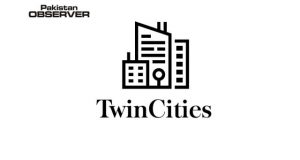Chief Executive Officer (CEO) of Pakistan Poverty Alleviation Fund (PPAF) Nadir Gul Barech said Benazir Income Support Program (BISP) has inspired the World Bank and it wants to model a few projects on the program.
Talking exclusively with WealthPK, Nadir said a World Bank commission had visited Pakistan to study the BISP programme, as they wanted to launch it in Yemen and other underdeveloped countries.
“In 2007, there were 60,000 borrowers and now there are 8 million of them facilitated by PPAF. We have made 0.147 million organizations in 147 districts and there are 130 society organizations through which we transfer funds to the needy citizens,” he added.
Nadir said they had given grants to 200 thousand families to start their own businesses at the low level.
‘’We have imparted technical and vocational education and training to 28,000 young boys and girls and made more than 4 million groups which are rendering services in the fields of health, education, and water supply in different areas of the country,” the PPAF CEO said.
‘’We have worked on infrastructure worth billions of rupees concerning disaster risk reduction, irrigation, drinking water supply scheme, renewable energy projects, and health and education in 147 districts of Pakistan. We have also contributed to the natural climatic disaster relief and built 1,20,000 homes for the families affected by the 2005 earthquake. We have also supported people affected by the Covid-19 pandemic,” Nadir continued.
The PPAF CEO said the Planning Commission of Pakistan had categorized the whole country. The worst category is the red category. The people falling in this category are very poor and unable to meet their basic needs. So, the first priority of PPAF is the red category across the country, he added. PPAF has been working since 2000, benefiting a lot of people and families across Pakistan.
There are many backward areas in Pakistan where people are not even able to get clean drinking water. Areas of Tharparkar (Sindh), Cholistan (Balochistan) and a few areas of Khyber Pakhtunkhwa are in very poor conditions. PPAF is trying to cover these areas very soon. It has covered 147 districts across Pakistan. The beneficiaries have started their own businesses and have come above the poverty line.
Hina Zawar from Lahore – a beneficiary of the PPAF loan scheme – told WealthPK, that she took a loan of Rs20,000 from Citi Microfinance to start her own business of making toys for kids. She paid a monthly instalment of Rs2,000.
“After paying back the entire loan, I again took a loan of Rs1,20,000 to start another business of making paper envelopes. Now, I earn a profit of Rs60,000 per month and have the ability to meet all my home expenses,” she said.
Ibad Ali, another beneficiary from Dera Allah Yar (Balochistan), said he took a loan of Rs100,000 from Citi Microfinance to open a small juice shop. He expanded his business to some extent and then took another loan of Rs200,000 to further expand his business.
“Now seven employees are working in my shop. I am earning a profit of Rs100,000 per month excluding all the expenses,” Ibad said.










